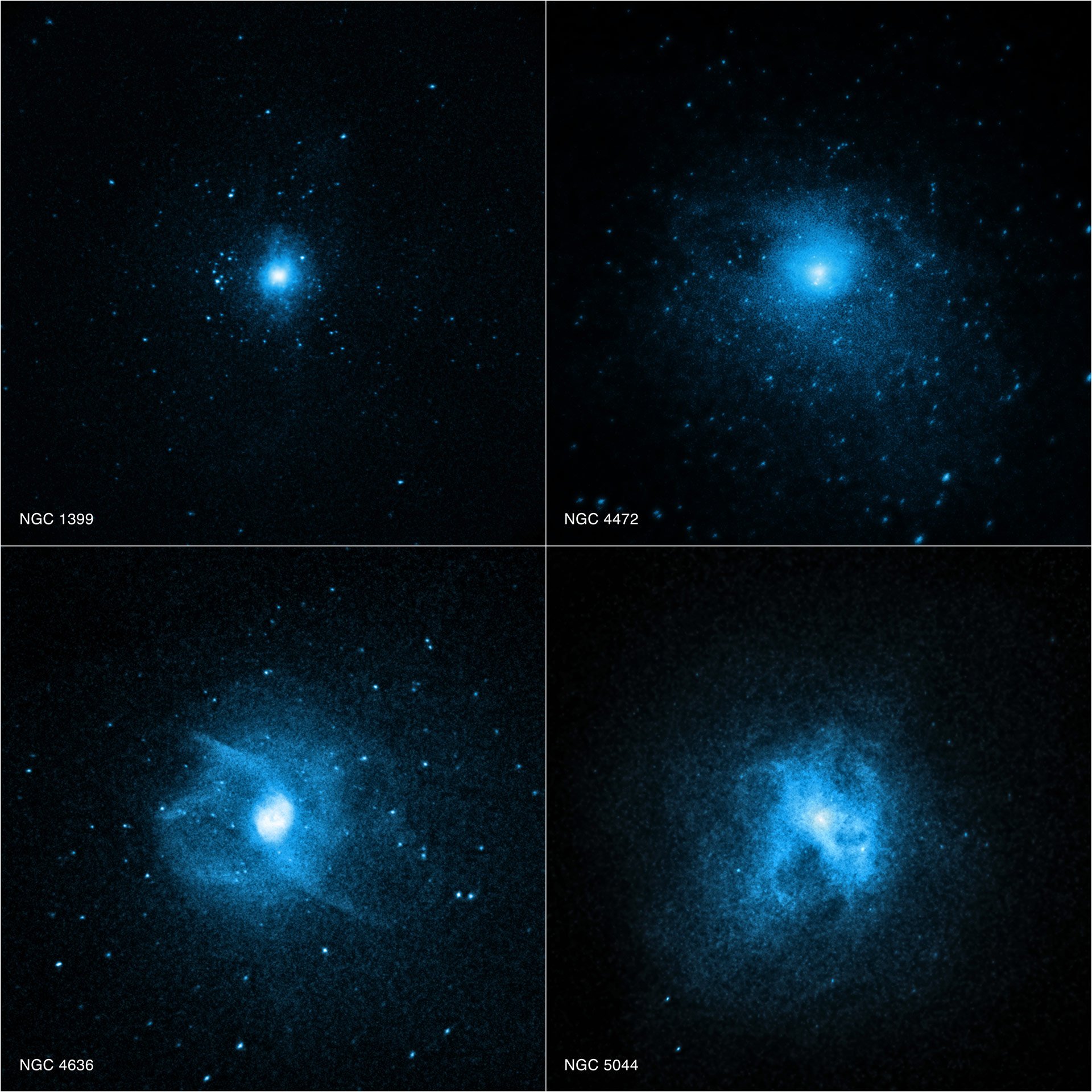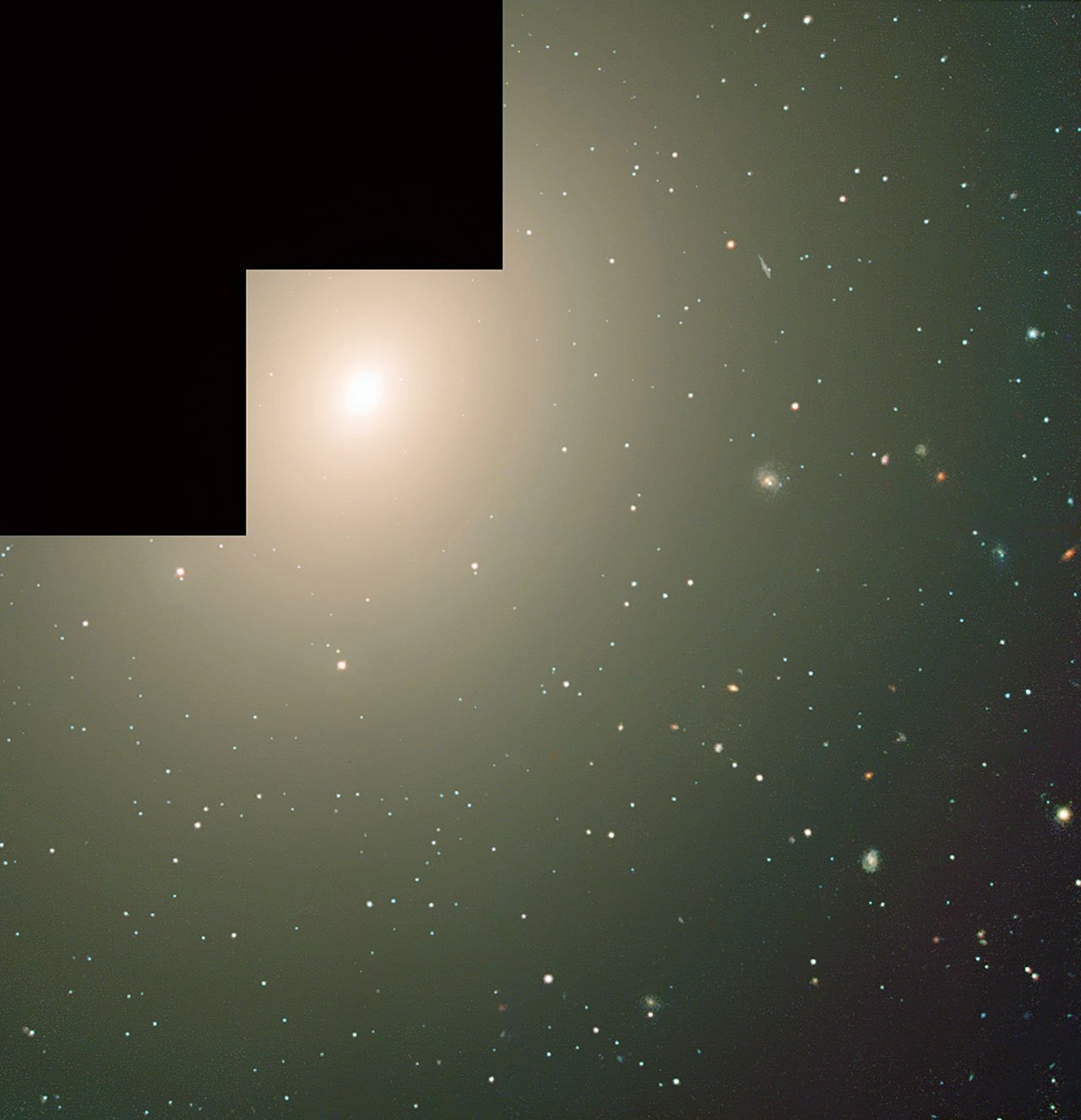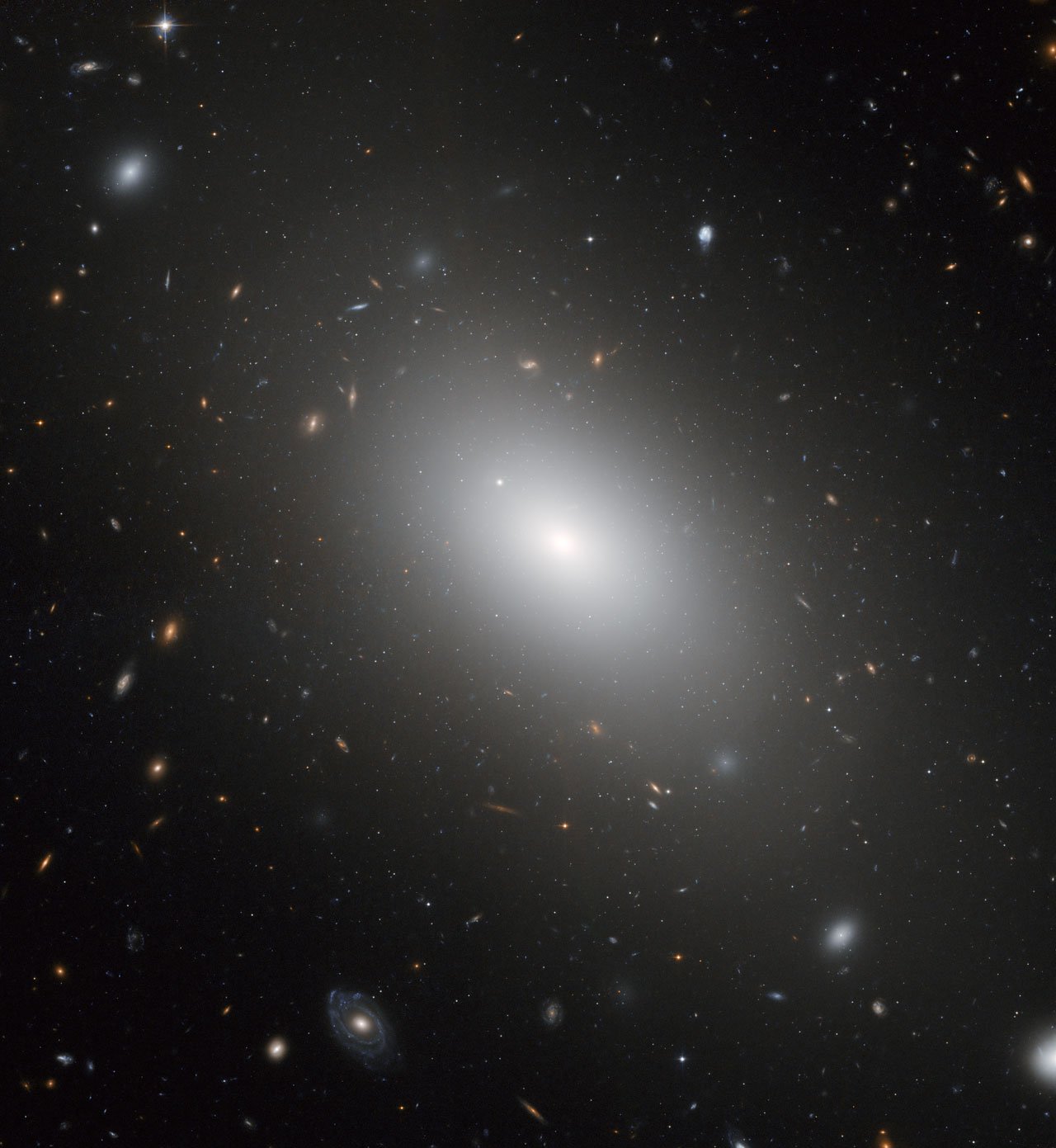Instead of spiral arms, elliptical galaxies are just big clumps of stars. There is very little gas and dust. Because there is not much gas and dust, there's not enough material to make new stars.
Why would elliptical galaxies have less gas and dust than irregular galaxies?
Giant elliptical galaxies, on the other hand, can contain over a trillion stars. Elliptical galaxies are reddish to yellowish in color because they contain mostly old stars. Most elliptical galaxies contain very little gas and dust because they had already formed.
What do elliptical galaxies have very little of?
Unlike spirals, elliptical galaxies usually contain little gas and dust and show very little organization or structure. The stars orbit around the core in random directions and are generally older than those in spiral galaxies since little of the gas needed to form new stars remains.
What type of galaxies have the most dust?
Spiral Galaxies
It is dominated by young, blue Population I stars. The central bulge is devoid of gas and dust. As you might expect, the bulge is composed primarily of Population II stars. Type c spiral galaxies have the most gas and dust.
Which type of galaxy has very little dust?
Elliptical galaxies contain mostly older stars. That means they often aren't as bright as spiral galaxies. They also have very little dust and gas. Elliptical galaxies are the largest and most common galaxies observed.
Why is there little star formation in elliptical galaxies?
Instead of spiral arms, elliptical galaxies are just big clumps of stars. There is very little gas and dust. Because there is not much gas and dust, there's not enough material to make new stars. In general, the stars in elliptical galaxies are old, red stars.



Do elliptical galaxies have young stars?
Elliptical galaxies, such as M87 (left), have very little gas and dust. Because gas and dust are found in the clouds that are the birthplaces of stars, we should expect to see very few young stars in elliptical galaxies. In fact, elliptical galaxies contain primarily old, red stars (also known as Population II stars).
Frequently Asked Questions
Why do some elliptical galaxies have shells of stars around them?
The gravitational interaction can cause ripples of material to compress and spread outward, a bit like ripples on a pond. This can cause waves of star formation, producing the shells.
Do elliptical galaxies have abundant gas?
Whilst spiral galaxies have rich reservoirs of the dust and gas that fuel star formation, elliptical galaxies appear to have virtually exhausted that fuel, and so there is very little raw material for the formation of new stars.
Do elliptical galaxies have cold gas?
These results confirm that, as in more massive galaxy clusters, cold molecular gas is formed in a sizeable fraction of group-dominant ellipticals, and that it survives for significant periods of time despite the surrounding hot IGM.
What do elliptical galaxies lack?
Elliptical galaxies have smooth, rounded shapes because the orbits of their stars are oriented in all directions. They contain little gas and dust, and no young stars.
FAQ
- What galaxy type does not have dust?
- Elliptical galaxies have shapes that range from completely round to oval. They are less common than spiral galaxies. Unlike spirals, elliptical galaxies usually contain little gas and dust and show very little organization or structure.
- What is missing from most elliptical galaxies?
- Elliptical galaxies have shapes that range from completely round to oval. They are less common than spiral galaxies. Unlike spirals, elliptical galaxies usually contain little gas and dust and show very little organization or structure.
- What do elliptical galaxies have?
- Elliptical galaxies are made up of mostly old stars, and do not have much gas and dust. There is very little new star formation in these galaxies. Elliptical galaxies also come in many sizes. The largest galaxies we see are ellipticals, but, elliptical galaxies can also be small.
- What prevents elliptical galaxies from continued star formation?
- Spiral galaxies are hotbeds of star formation, but elliptical galaxies aren't nearly as prolific because they contain less gas and dust, which means fewer new (and brighter) stars are born. The existing stars inside an elliptical galaxy tend to be older, giving off more red light than younger stars.
Why does an elliptical galaxy have few young stars and low star formation
| Why is it not surprising that very little star formation is found in elliptical galaxies? | Elliptical galaxies are also known for their dearth of star-forming material. This is because when spirals — which typically contain plentiful gas with which to make new stars — collide, gravity also triggers that gas to quickly condense and form stars all at once in a single big burst. |
| Why active star formation does not typically occur in elliptical galaxies because they? | Elliptical galaxies contain very little gas and dust, and the gas that is present is very hot and diffuse. Consequently, there is no current star formation in elliptical galaxies. |
| Are elliptical galaxies still forming stars? | Unlike the Milky Way, which is continuously forming new stars, elliptical galaxies are dead, and stopped forming stars billions of years ago. |
| Is gas found in galaxies? | Gas called the intergalactic medium fills the space between galaxies; the gas of the circumgalactic medium surrounds galaxies more closely. The gas in both places regulates the birth, life and death of the galaxies, and holds a detailed history of the universe. Only lately have astronomers been able to detect it. |
- Why does an elliptical galaxy have few young stars and low star formation?
- Jan 9, 2019 — The existing stars inside an elliptical galaxy tend to be older, giving off more red light than younger stars. So, why do astronomers think
- What do elliptical galaxies not actively create?
- This may be a partial explanation of why ellipticals are not actively forming stars: they do not contain the reservoirs of cold gas needed for star formation. There are also galaxies that do not fit neatly into one of these two simple categories.
- Can galaxies change appearance over time how do these changes occur?
- Galaxies form out of immense clouds of gas that collapse and rotate. As they evolve, stars form within them. Entire galaxies can collide, changing their appearance. Looking deep into space, we see galaxies at earlier stages in their lives, and learn more about their evolution.
- Do elliptical galaxies have star formation?
- Elliptical galaxies are the most massive stellar systems in the local Universe and appear to define a homogeneous class of objects with uniformly old and red populations, negligible amounts of gas and very little star formation.
